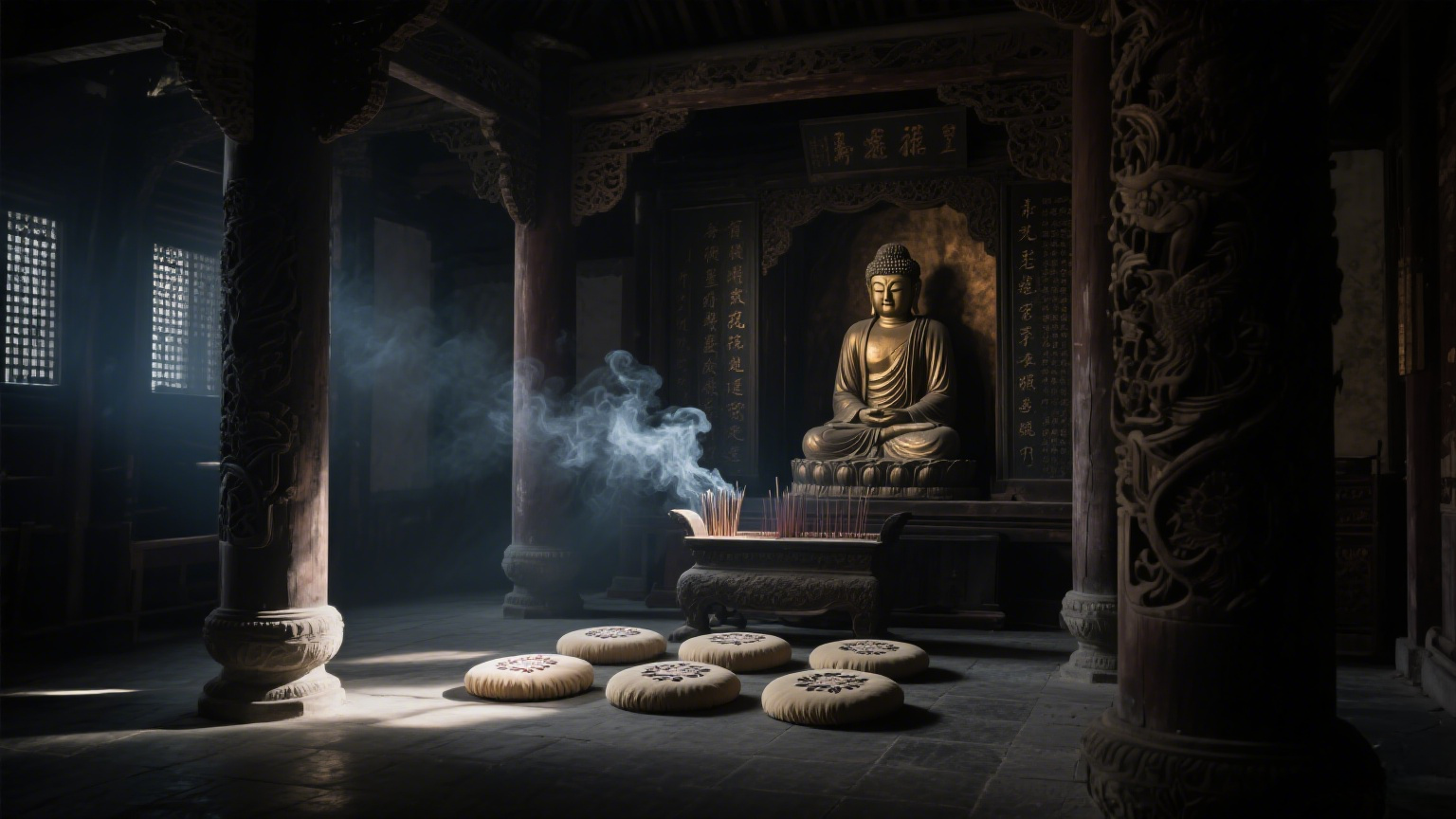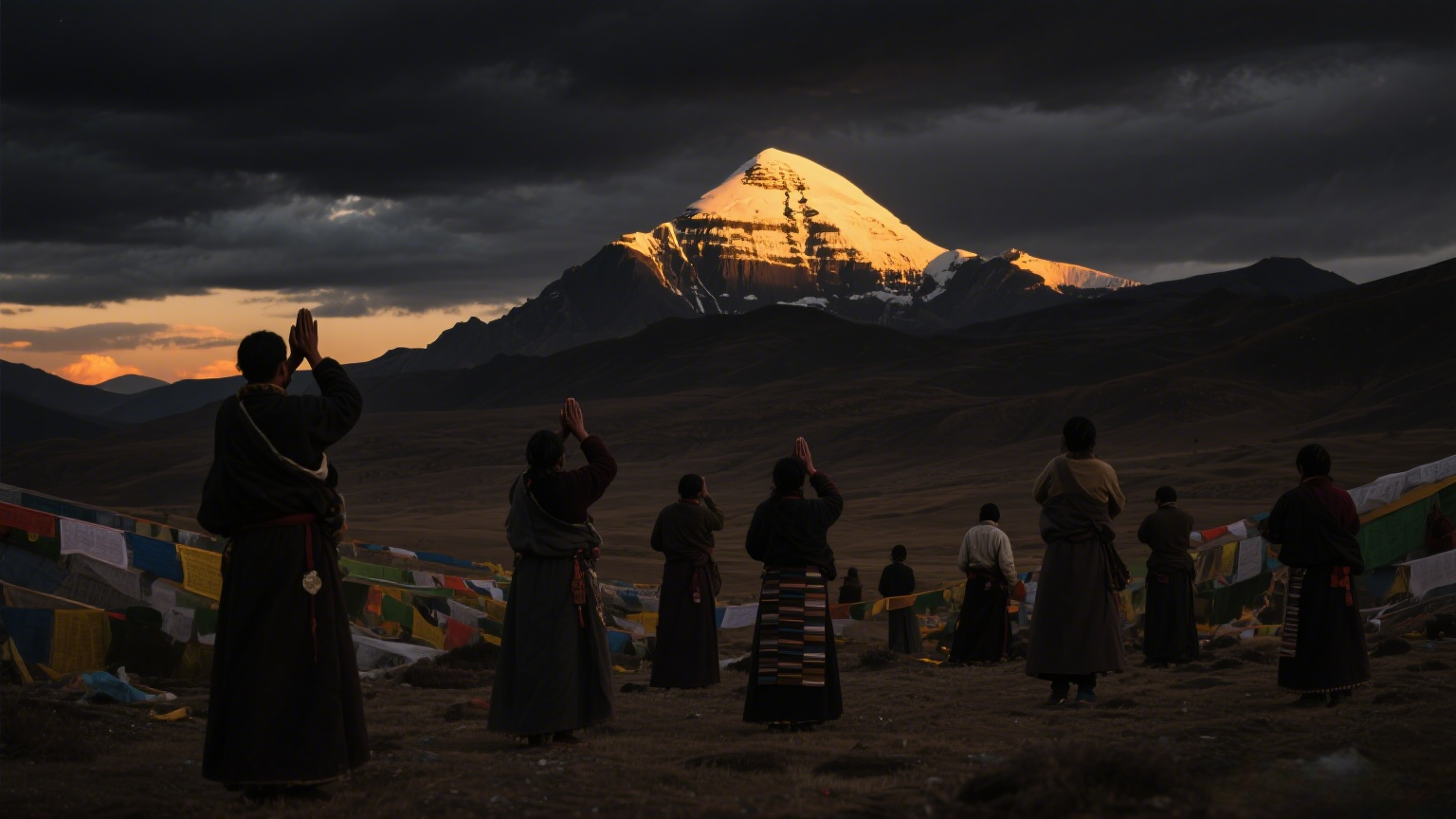The Heart Sutra: A Journey Through Time and Energy
·

·
In the seventh century, as the Chinese monk Xuanzang traversed the harsh deserts of Central Asia on his pilgrimage to India, he encountered a mystical figure known as the Nestorian Monk, who bestowed upon him a short yet profound text—the Heart Sutra. Composed of just 260 Chinese characters in its concise version, this scripture would become one of the most recited and studied Buddhist texts worldwide, transcending cultural and temporal boundaries .

Xuanzang's translation, completed between 649 and 654 CE, captured the essence of Avalokiteshvara Bodhisattva's insight into the nature of emptiness ("sunyata")—the revolutionary idea that "form is not different from emptiness, emptiness not different from form" . This concept of interdependence, where all phenomena lack inherent existence, has found surprising resonance in modern Western searches for "mindfulness" and "spiritual growth," with interest in these terms showing a significant upward trend globally, peaking during times of stress like the COVID-19 pandemic .
The Heart Sutra in Modern Spiritual Landscapes
Today, the Heart Sutra's teachings on presence and non-attachment have become cornerstones of mindfulness practices in the West. Its mantra—"Gate, gate, paragate, parasamgate, bodhi svaha"—is often chanted in meditation centers and yoga studios, where practitioners seek to cultivate "present-moment awareness" and emotional balance . This ancient text, once carried across deserts for spiritual protection, now appears in digital formats, podcasts, and even neuroscientific studies exploring its impact on brainwave patterns.
The sutra's popularity aligns with a broader Western interest in harmonizing mind and body, a trend reflected in searches for "mind-body connection" and "holistic wellness." Its emphasis on transcending dualistic thinking—seeing through the "illusion" of separate self and objects—echoes contemporary discussions in quantum physics, where scientists like Albert Einstein noted the illusory nature of time and space, paralleling the Heart Sutra's wisdom .
The Heart Sutra as a Feng Shui Energy Tool
In the context of feng shui, the Heart Sutra serves as a "spiritual energy resonator," transforming living spaces through the power of its words and intent. This function hinges on the concept of "qi" (energy flow) and the sutra's ability to create the harmonic balance that modern searches describe as "home harmony" and "positive aura" .
Programming Space with Spiritual Intent
Placing a calligraphy or printed version of the Heart Sutra in key areas of the home—such as the southeast "wealth sector" in the Bagua Map—acts as an intentional focal point for energy optimization. The text's vibrations, when recited or even displayed, are believed to clear "sha qi" (negative energy) and enhance the flow of "sheng qi" (positive life force), much like how crystals are used to harmonize environmental energy . This practice aligns with Western searches for "energy flow home direction," as the sutra's presence is thought to influence the spatial dynamics of a room.

The Science of Sacred Sound
The Heart Sutra's mantra, when chanted, generates sound waves that resonate with the body and environment. This acoustic energy is similar to what modern searches refer to as "vibrational healing"—a concept that bridges ancient wisdom and contemporary wellness trends. Studies in neuroplasticity suggest that repeated recitation can rewire brain pathways, reducing stress and enhancing focus—outcomes highly relevant to those seeking "mindfulness benefits" through digital practices .
In feng shui applications, the sutra's text is often framed in materials that complement the Five Elements: silk (wood) for growth, gold ink (metal) for clarity, or stone tablets (earth) for stability. This intentional design creates what could be called a "spiritual energy matrix," a term that reflects the modern interest in "energy field science" and the sutra's quantum-like principle of interconnectedness .
From Desert Pilgrimage to Digital Age
The journey of the Heart Sutra from ancient India to modern Western homes is a testament to its timeless relevance. What began as a protective talisman for a weary traveler has evolved into a tool for navigating the stresses of the digital age, addressing search queries like "anxiety relief techniques" and "spiritual grounding." Its feng shui application speaks to a universal human need to create sacred spaces that mirror inner balance—a need that transcends cultural boundaries.
As sunlight filters through a window onto a Heart Sutra scroll, the words "form is emptiness, emptiness is form" take on new meaning in the context of a cluttered modern home. The sutra's presence serves as a reminder to let go of physical and mental obstacles, allowing energy to flow freely—much like the desert winds that once carried its wisdom across continents. In this way, the Heart Sutra becomes not just a spiritual text, but a living practice for harmonizing one's inner and outer environments, answering the modern search for "holistic living" with ancient insight.



Comments